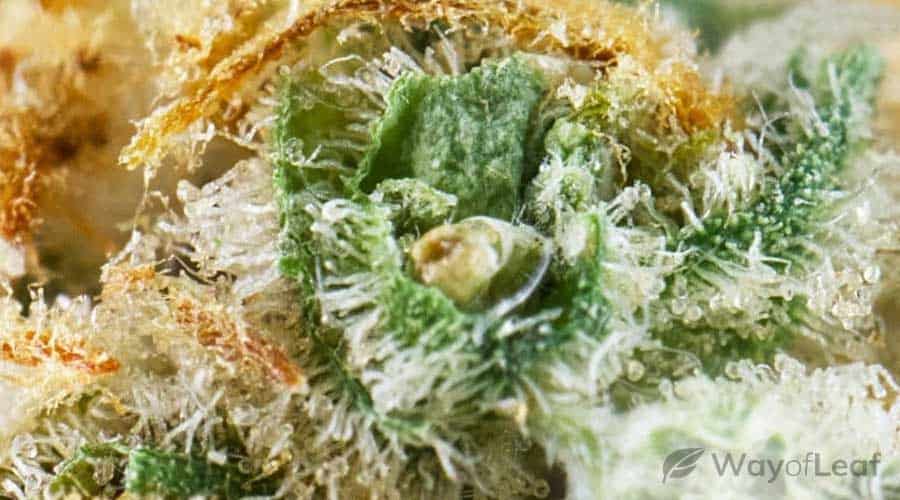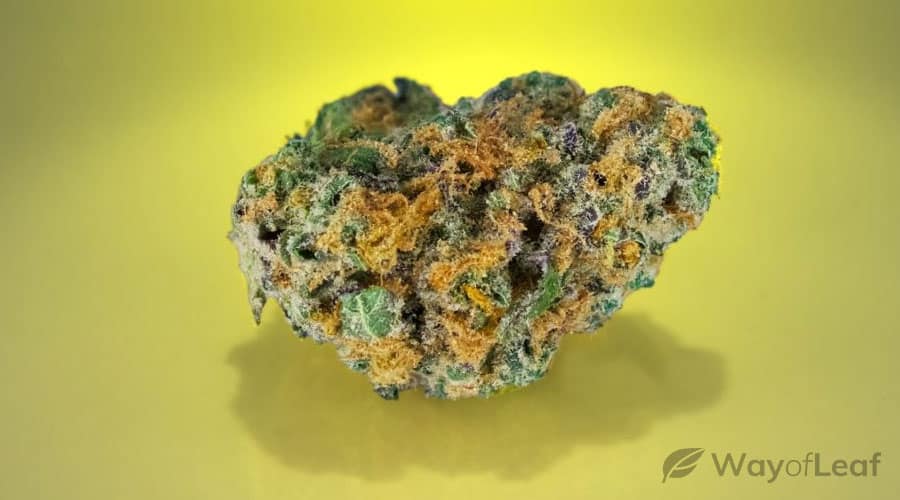If you are looking to grow your favorite strain, the ‘Growing’ section of the WayofLeaf website is the place to go. We have created a series of articles that provide tips about how to grow different cannabis strains.
In this one, we’ll tell you all you need to know about growing the Lemon Skunk strain. We’ll start by giving you a brief overview of the strain before providing a few tips to help you maximize your yield.
Lemon Skunk is a fragrant and uplifting hybrid that still remains incredibly popular today.
Keep reading our growing guide for Lemon Skunk – a fragrant and uplifting hybrid that still remains incredibly popular today.
Tip #1: Lemon Skunk Strain Review
Lemon Skunk is a cross of two different Skunk phenotypes, and it was created in Amsterdam by DNA Genetics. Some believe that is a cross of Skunk #1 and Dutch Citron Skunk. The result is a zesty delight with a THC content ranging from 15% to a formidable 22%.

It is a sativa-dominant (60%) hybrid that also contains up to 1% CBD. Users describe Lemon Skunk’s effects as mood-enhancing and invigorating without being overwhelming. As time passes and the initial high dissipates, a gentle feeling of relaxation takes over. The good news is that this strain never becomes sedating or causes couchlock; therefore, it is suitable for daytime use.
Tip #2: Growth Difficulty
Experienced Lemon Skunk growers rate its growth difficulty as easy to moderate. Its sativa bud structure means it can handle a more humid climate, but it is also durable enough to withstand cooler temperatures. It is also naturally resistant to mold and mildew, which makes it a straightforward strain to grow.
Tip #3: Growing Techniques for Lemon Skunk
Lemon Skunk grows tall and needs lots of vertical space. As a result, you need more than a basic grow tent when growing indoors. One option is to begin growing this strain indoors before bringing it outside during the flowering stage.
As the buds grow and the branches stretch, support structures become essential to stabilize the plant. When you transplant the crop, install a heavy and durable tomato cage to avoid damaging the root system. Next, install four metal T-posts spaced equally around each container. Make sure you get this step right because the posts support the entire plant.

Use vinyl-coated wire caging or wire fencing to create horizontal trellising. The holes should be 4-6-inch squares. Cut the material into a couple of square pieces that are big enough to touch the posts. Above the tomato cage, hang the first caging square horizontally by tying the corners to the posts with twine or wire. You can also add a secondary horizontal trellis approximately two feet above the first one.
The final step is to create outer caging to support branches that grow laterally. Cut the material so that each piece can fit in the spaces between the T-posts. Install this caging a couple of feet above the top of the container to make it easy for you to access the plants. Secure the outer caging to the posts in a few spots. This outer portion must be in place before the Lemon Skunk plant’s branches reach that height. When you do it right, the branches grow easily into the holes.
Tip #4: Lemon Skunk Yield
If you grow Lemon Skunk indoors, you can expect a yield of up to 18 ounces per square meter planted. For outdoor growers, the yield is higher—up to 28 ounces per plant! The best time to harvest this crop outdoors is in early October.
Tip #5: Feeding Lemon Skunk
Lemon Skunk is a moderate feeder that thrives in healthy soil and when fertilized with compost tea. The great thing about compost tea is that it’s filled with nutrients and beneficial microorganisms. It is also helpful to dress the top of the soil with different nutrients throughout the growing cycle.
You need to create a compost heap,, which you will use as the base for the tea. Ideally, you will source your compost locally because this means the organisms in it are used to pathogens common to the area. You can add worm castings, fish hydrolysate, molasses, and kelp to the tea.
You can create a tea brewer using a large bucket, an air pump connected to an aerator device, and mesh bags in different sizes. Alternatively, purchase a ready-made brewer!
Allow the compost tea to brew for between 24-36 hours. Be careful not to leave it for too long, or the microorganisms in the brew could die. When it is ready, use it immediately for best results. We recommend adding it to the soil in foliar spray form in the morning or evening.
You can add it to the roots or spray it on the leaves of your Lemon Skunk plants. Add it in a 1:2 (one part tea, two parts water) ratio if using a spray-on application for the leaves. If you want to place it directly on the roots, use a 1:20 ratio.
Tip #6: Growing Indoors or Outdoors: Which One is Best?
You can grow Lemon Skunk indoors because it is relatively low maintenance. The main issue is that this strain grows tall, which means space is likely to become a problem if you only have a small grow tent. If you decide to grow it inside, make sure you top and trim it regularly. Lemon Skunk thrives when grown outdoors because it has space to stretch out fully.
Tip #7: Lemon Skunk Flowering Time
Lemon Skunk’s flowering time is 8-9 weeks. Once you get towards the recommended harvest time, you have a couple of options. If you want to enhance the lemon flavor, harvest a week or so early when slightly more than half of the pistils have changed color. If you would prefer a balanced flavor, allow about three-quarters of the pistils to change color before harvesting.

Tip #8: Temperature and Relative Humidity
The optimal temperature range for the Lemon Skunk strain is between 68-80 degrees Fahrenheit. It is important that indoor growers understand the relationship between temperature and humidity. Relative humidity (RH) relates to the amount of water that air can hold at a specific temperature. Therefore, when you increase the temperature, you need to decrease the humidity and vice versa.
When harvest time is approaching, drop the RH to 40% and the temperature to 68 degrees.
You can keep the RH at 65-70% during the vegetative stage as long as the daytime temperature is 70-75 degrees. You should reduce the temperature to around 70 degrees in the early flowering stage and drop the RH to 50%. When harvest time is approaching, drop the RH to 40% and the temperature to 68 degrees.
Final Thoughts on Growing Lemon Skunk
Lemon Skunk is a relatively easy marijuana strain to cultivate. You can try to grow Lemon Skunk indoors, but its height means you’ll need lots of vertical space. While you can use a hydroponics setup indoors, this strain performs at its peak when grown in soil outdoors.
We hope you find our growing guide helpful. In the comments, let us know how you got on growing the Lemon Skunk strain.




![8 Tips for Growing NYC Diesel Marijuana [Grower’s Guide]](https://wayofleaf.com/wp-content/uploads/2019/01/wol-banner-8-tips-for-growing-nyc-diesel-marijuana-640x225.jpg)
![8 Tips for Growing Hindu Kush Marijuana [Grower’s Guide]](https://wayofleaf.com/wp-content/uploads/2019/01/wol_growing-hindu-kush-marijuana-640x225.jpg)

![8 Tips for Growing Lemon Haze Cannabis [Grower’s Guide]](https://wayofleaf.com/wp-content/uploads/2018/11/mj_8-tips-for-growing-lemon-haze-marijuana-the-practical-guide-640x225.jpg)
![Growing White Widow Cannabis [The Grower’s Guide]](https://wayofleaf.com/wp-content/uploads/2018/09/wol_1920x450-13-640x225.jpg)
![Growing Autoflowering Cannabis Seeds [Guide]](https://wayofleaf.com/wp-content/uploads/2018/09/wol_1920x450-35-640x225.jpg)
![5 Ways to Prevent Plant Stress [And Save Your Weed Crop…]](https://wayofleaf.com/wp-content/uploads/2018/08/wol_ways-to-prevent-plant-stress-640x225.jpg)

